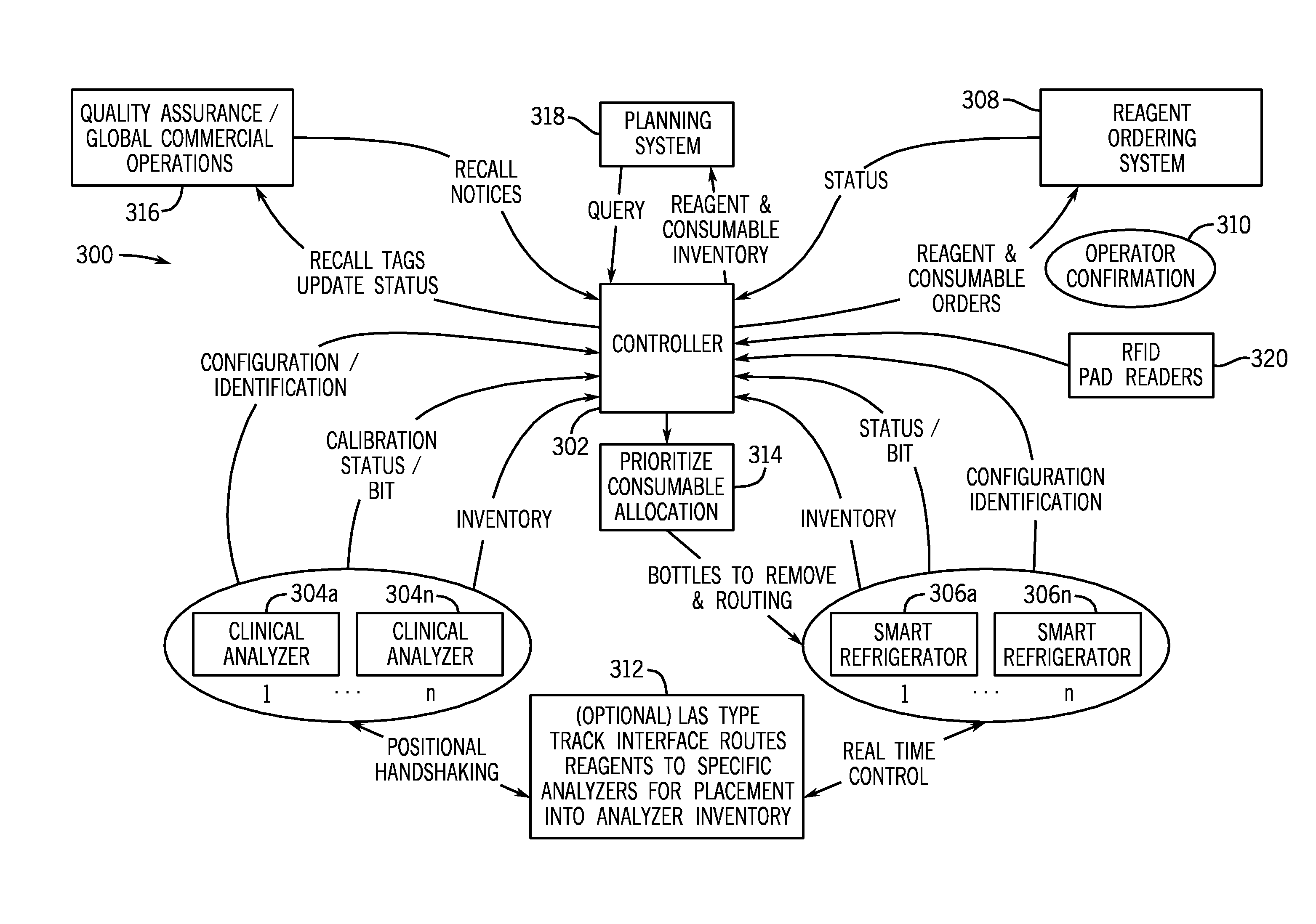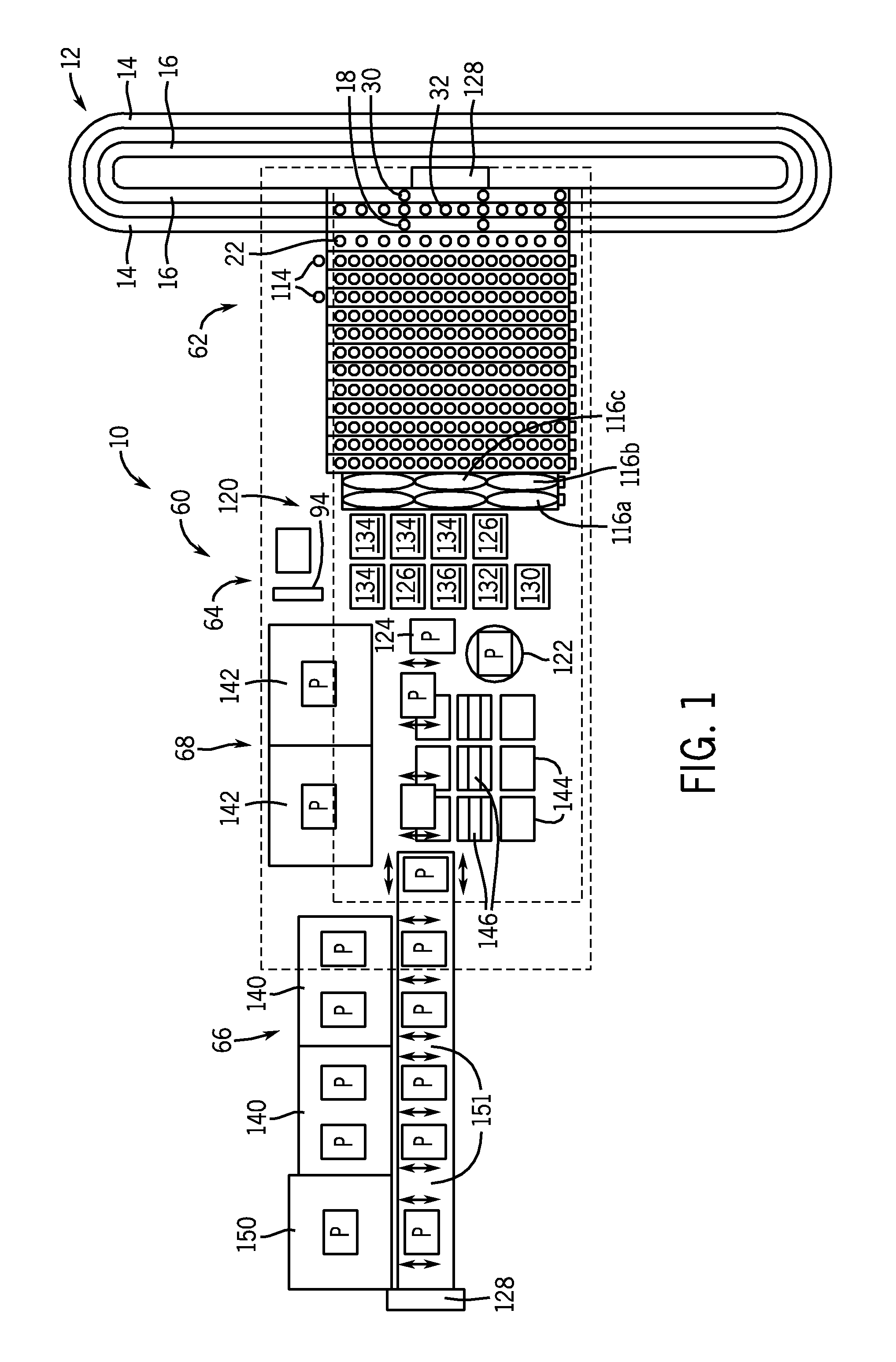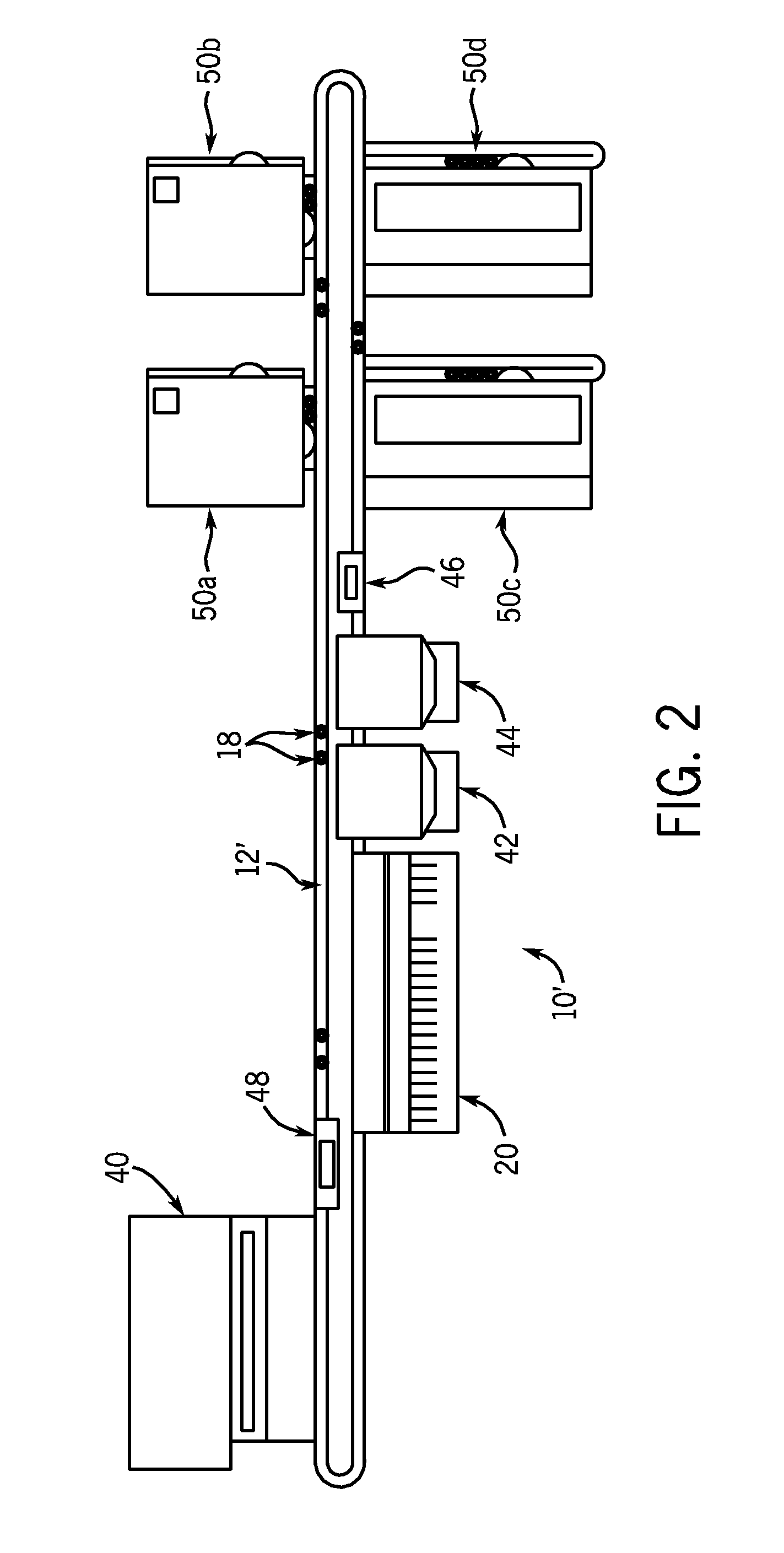System for managing inventories of reagents
a technology for managing inventories and reagents, applied in the field of laboratory automation systems for managing inventories, can solve the problems of large volumes of liquid waste and solid waste generation, high cost, and the inability of the above-mentioned automated analyzer to be modified to suit the demands of certain users, and achieve the effect of saving labor
- Summary
- Abstract
- Description
- Claims
- Application Information
AI Technical Summary
Benefits of technology
Problems solved by technology
Method used
Image
Examples
Embodiment Construction
[0032]As used herein, the expression “radio frequency identification”, or “RFID”, is a generic term for technologies that use radio waves to automatically identify objects, such as, for example, containers for biological samples and containers for reagents for analyzing biological samples. The most common method of identification is to store a serial number that identifies the object, and perhaps other information relating to the object or contents thereof, on a microchip that is attached to an antenna. The microchip and the antenna together are called a radio frequency identification transponder or a radio frequency identification tag. The antenna enables the microchip to transmit the identification information and other information to an antenna connected to a radio frequency identification reader. The radio frequency identification reader converts the radio waves transmitted from the radio frequency identification tag into digital information that can then be passed on to compute...
PUM
| Property | Measurement | Unit |
|---|---|---|
| volume | aaaaa | aaaaa |
| temperature | aaaaa | aaaaa |
| temperature | aaaaa | aaaaa |
Abstract
Description
Claims
Application Information
 Login to View More
Login to View More - R&D
- Intellectual Property
- Life Sciences
- Materials
- Tech Scout
- Unparalleled Data Quality
- Higher Quality Content
- 60% Fewer Hallucinations
Browse by: Latest US Patents, China's latest patents, Technical Efficacy Thesaurus, Application Domain, Technology Topic, Popular Technical Reports.
© 2025 PatSnap. All rights reserved.Legal|Privacy policy|Modern Slavery Act Transparency Statement|Sitemap|About US| Contact US: help@patsnap.com



